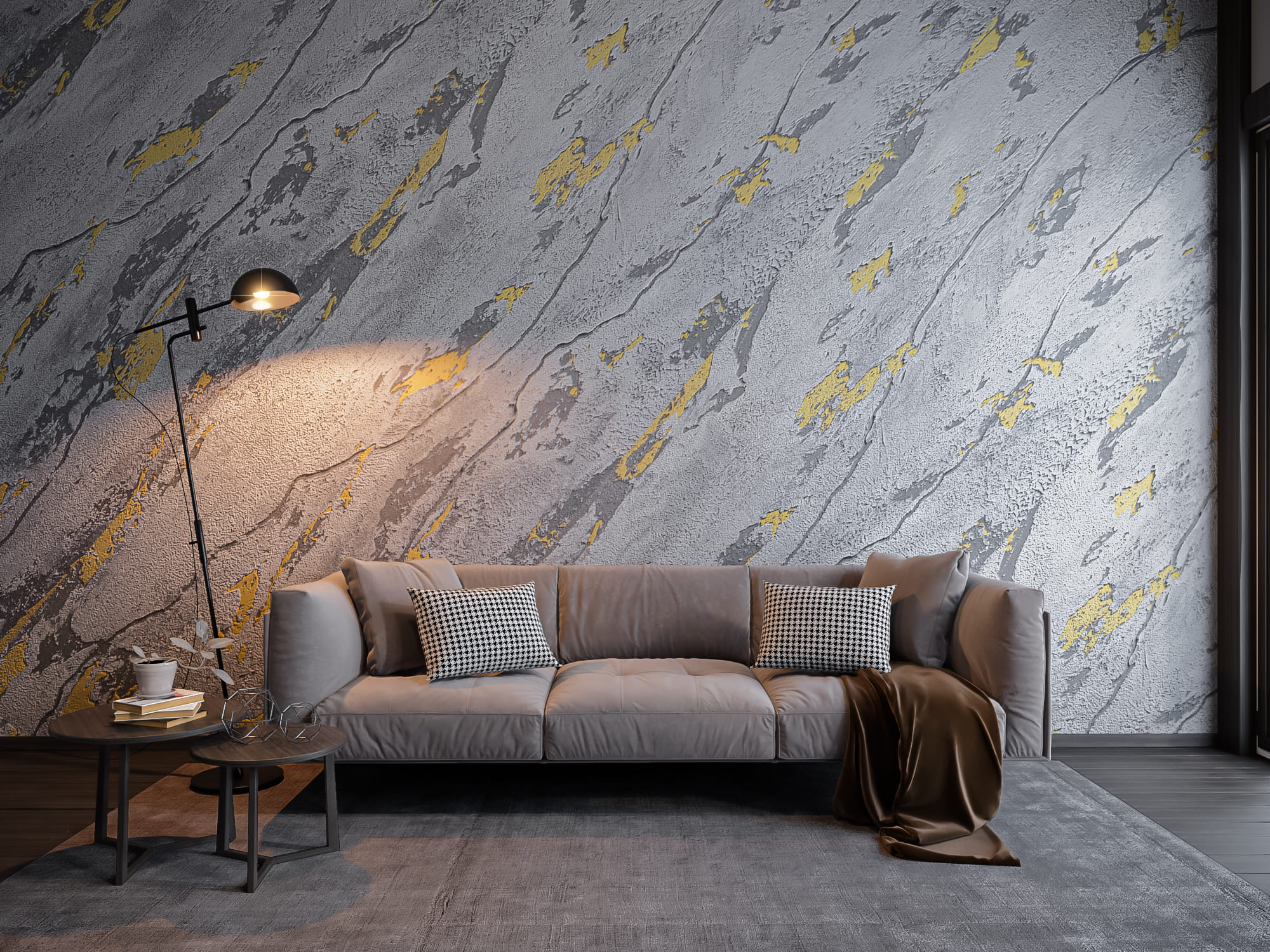The faux concrete wall paint allows you to incorporate the industrial style without adding concrete elements to your home. Apply the finish to your concrete walls in conjunction with leather furniture or metal accessories to evoke an industrial look.
Start by priming the basement walls, in the event that it is required. Apply a thin coat of paint and let dry completely. Then, draw lines across the wall with a level and pencil. Then, you can mask the area by applying painter’s tape on the lines you made.
Industrial Look Painting Techniques
Concrete walls offer a chic, collected appearance. Concrete walls can be a great backdrop for any style of decor and can transform your room into a raw, industrial space that is classic and modern. But, if the idea of living in a concrete dwelling isn’t your cup of coffee, don’t fret, you can still achieve the industrial look, without sacrificing comfort or practicality.
There are several creative painting techniques that could make a realistic-looking concrete look in your bedroom. One popular method involves layering shades of gray to create the mottled appearance of real concrete that is poured. Choose a darker base color and then a topcoat of acrylic that is lighter in tone to create a striking appearance. Apply the glaze coat in vertical strokes, working on small portions at a given time to ensure that it doesn’t dry too fast.

Another option is to use an abrasive sandpaper that roughens the walls prior to applying your fake concrete paint. This makes a texture more real-looking and creates a more aged appearance. You can achieve an aged look by adding an additional layer of grey paint on the concrete with a sponge. This will darken any crevices and cause bubbles or holes that give it a more aged look.
Concrete Wall Painting Techniques
Concrete wall painting methods vary, but they all focus on creating a faux or weathered appearance. The specifics of the method you choose will determine whether you can achieve a elegant or striking look, and the outcome will depend on the kind of paint you select. Choose a primer that is specifically designed for concrete surfaces. Paint for walls that is normal will not stick to the concrete surface. The right primer will assist in making sure that your new paint job lasts longer and is more resistant to being damaged.
Striping is among the easiest methods to paint concrete. The painter’s tap is positioned on the wall and then alternate stripes of different colours are then painted. This will make the space appear larger and more interesting. If you are planning to do this it’s essential to use a high-quality paint. It is recommended to choose the concrete paint or masonry paint. These are thicker and designed for concrete and other types of surfaces.
Another alternative is to make a textured look on your wall by sponging. This method involves multiple layers of paint. Additionally, it’s suggested to apply the sponging when the paint layer remains wet. To do this you need to dip the sponge in half paint and half glaze, and then dab it on the wall in random patterns.
How to paint faux concrete
Like any other son chau cay ri set project, a faux-concrete wall must be prepared. Scuffing the surface with rough sandpaper can help the paint adhere and will also give it a rough, more authentic look. Then, choose the paint color. If you prefer a lighter appearance mix white and grey or yellow. To achieve a more dark finish it is necessary to apply multiple coats. You can apply a stippling technique on the paint that is wet, which will highlight the textured look of the concrete.
Start with a brush and apply paint to the corners, areas that your roller can’t reach as well as areas next to doors and windows. Apply the coating to your roller and paint the main part of the wall widthwise into 3 to 4′ square sections, working with a zigzag pattern that overlaps strokes. Begin from left to right, then back from left to evenly spread.
Once your concrete wall is dry, start stippling it with a small screwdriver or brush. This will create the illusion of bubbles and holes in concrete. If you would like it to appear more authentic then sand the surface with 400-grit paper. Then, clean the sanded paint using a damp, clean cloth.
DIY Faux Concrete Walls
With the proper guidelines and tools, getting an unidirectional concrete texture is a simple DIY project. Below are four easy steps that will help you achieve the look you want:
Clean the Wall
Begin by thoroughly cleaning your walls before fixing any repairs that are required. This will help ensure a better bond of the texture material as well as a more consistent texture. You might also wish to use a primer in accordance with the directions for the wall texture product.
Texture Enhancers
Certain textured paints come with texture additives built in, while others require a texture using the granules you make yourself. To achieve the desired effect adhere to the instructions of the product and ensure you mix well for an uniform distribution.
Slap Brush
To create a lively and fun style, consider the Jackson Pollock treatment on your walls by covering the wall with a paint brush coated with a mixture of paint and water. The result is a marbling look. Work in sections for best results. Allow each section to dry completely before moving on.
Once the texture has dried, it is possible to apply a layer of clear sealer in order to protect it against wear and tear. You can paint or stain the walls after the sealer has dried to match your design aesthetic. If you choose to stain your walls it’s recommended to do this before applying the clear sealer.a